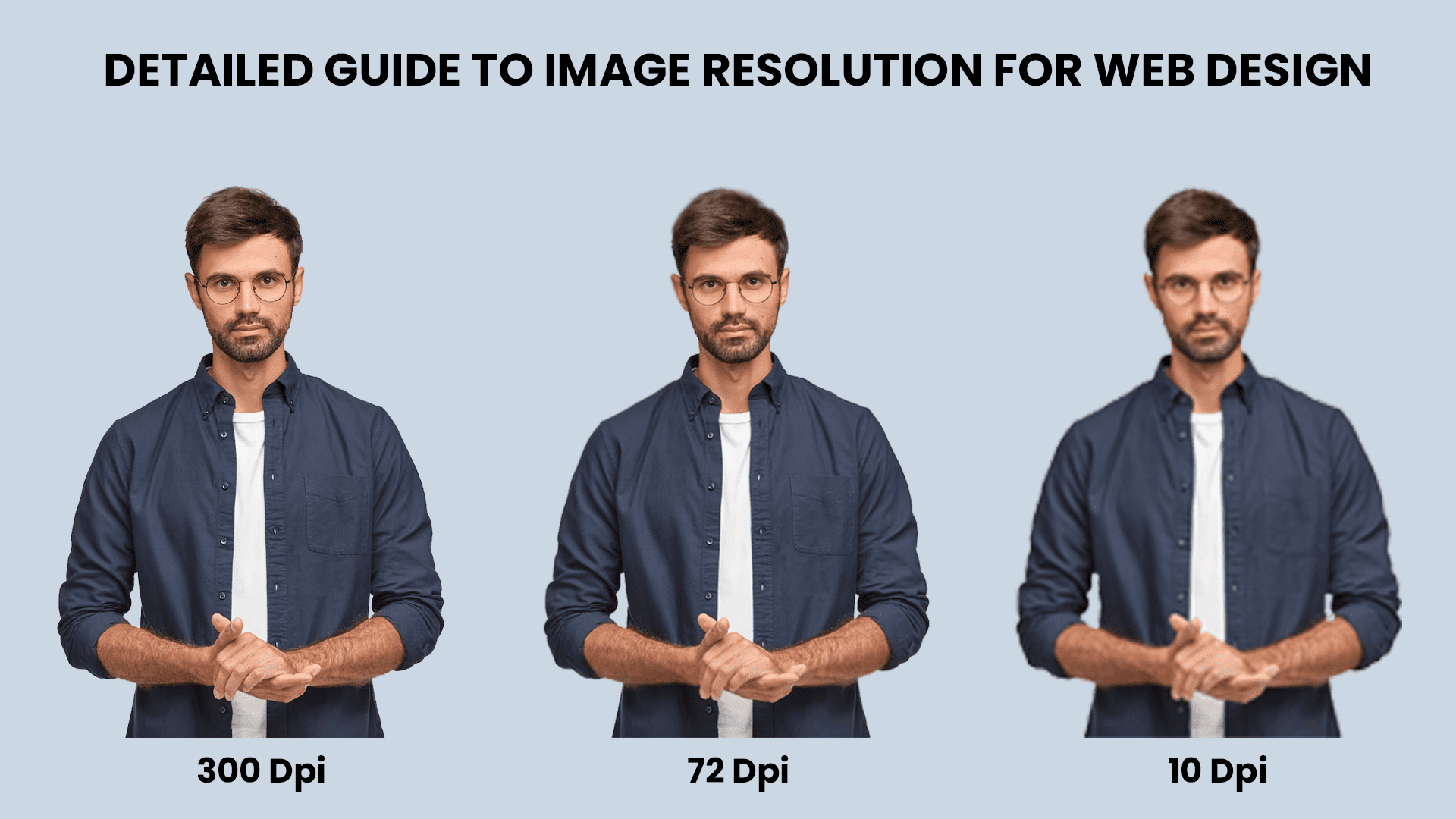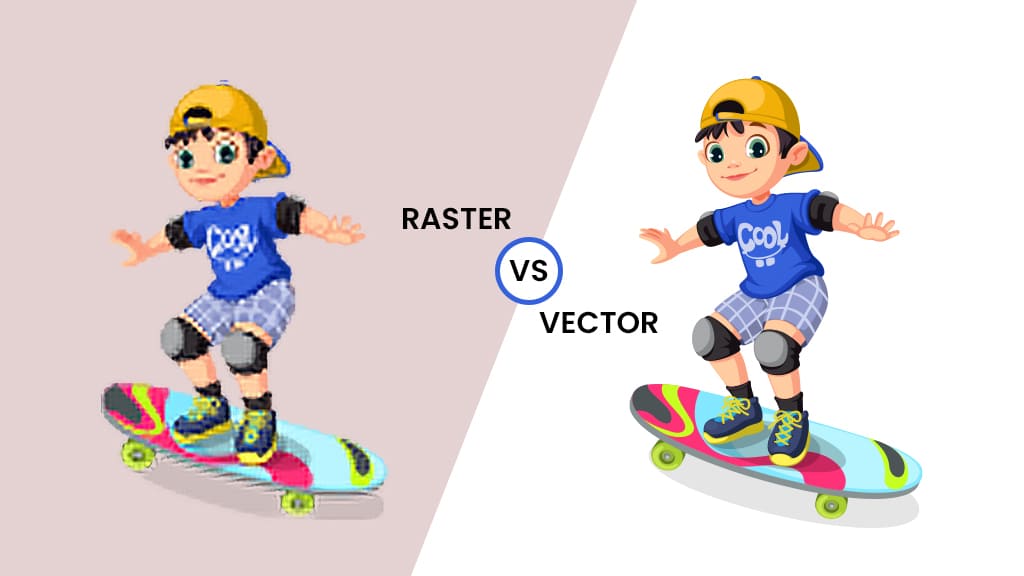
The knowledge of different image formats is important to design websites; it articulates the published information practically, helps the user gain a better experience, and improves the platform presentation.
Pictures are mainly categorized into two types: Raster and Vector. Both digital image files are used to convey visual information neatly.
Raster Images and Vector Images
People ask the common question: What is the difference between raster images and vector images?
Raster Photos
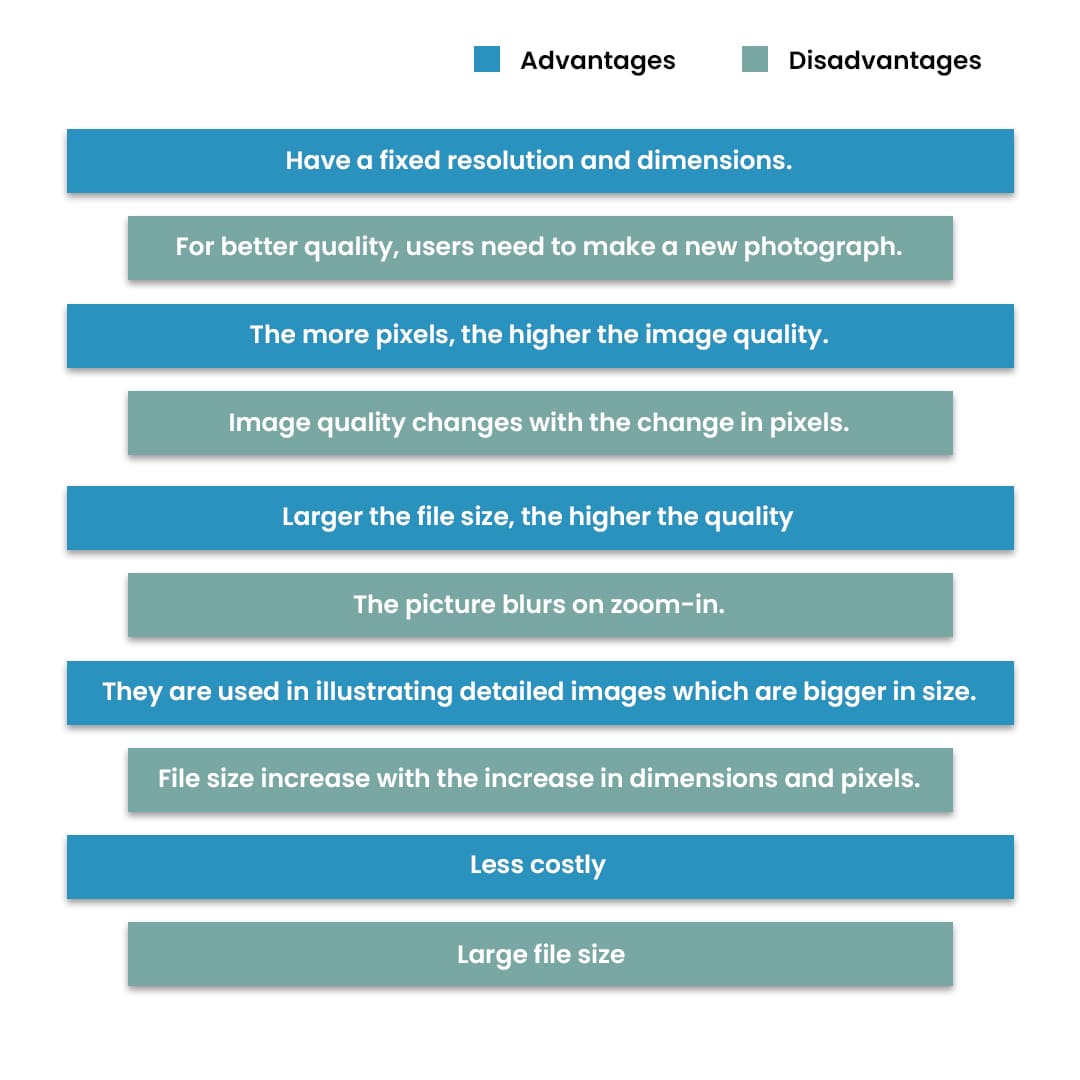
Raster photos are made of pixels and have fixed resolutions and image dimensions.
Small squares and dots collectively form a pixel, and the size of a raster image depends on the number of pixels composed in a snap.
Subsequently, they are measured as dots per inch/ points per inch. The photographs we capture, the screenshots, the scanned images, etc., are raster photos.
In summary, raster images are mainly a combination of dots, squares, or pixels with unique colors that makes the character.
JPG, GIF, BMP, TMP, PNG, and TIFF are common raster file extensions.
| Advantages | Disadvantages |
| Have a fixed resolution and dimensions. | For better quality, users need to make a new photograph. |
| The more pixels, the higher the image quality. | Image quality changes with the change in pixels. |
| Larger the file size, the higher the quality | The picture blurs on zoom-in. |
| They are used in illustrating detailed images which are bigger in size. | File size increase with the increase in dimensions and pixels. |
| Less costly | |
| Large file size |
Vector Images
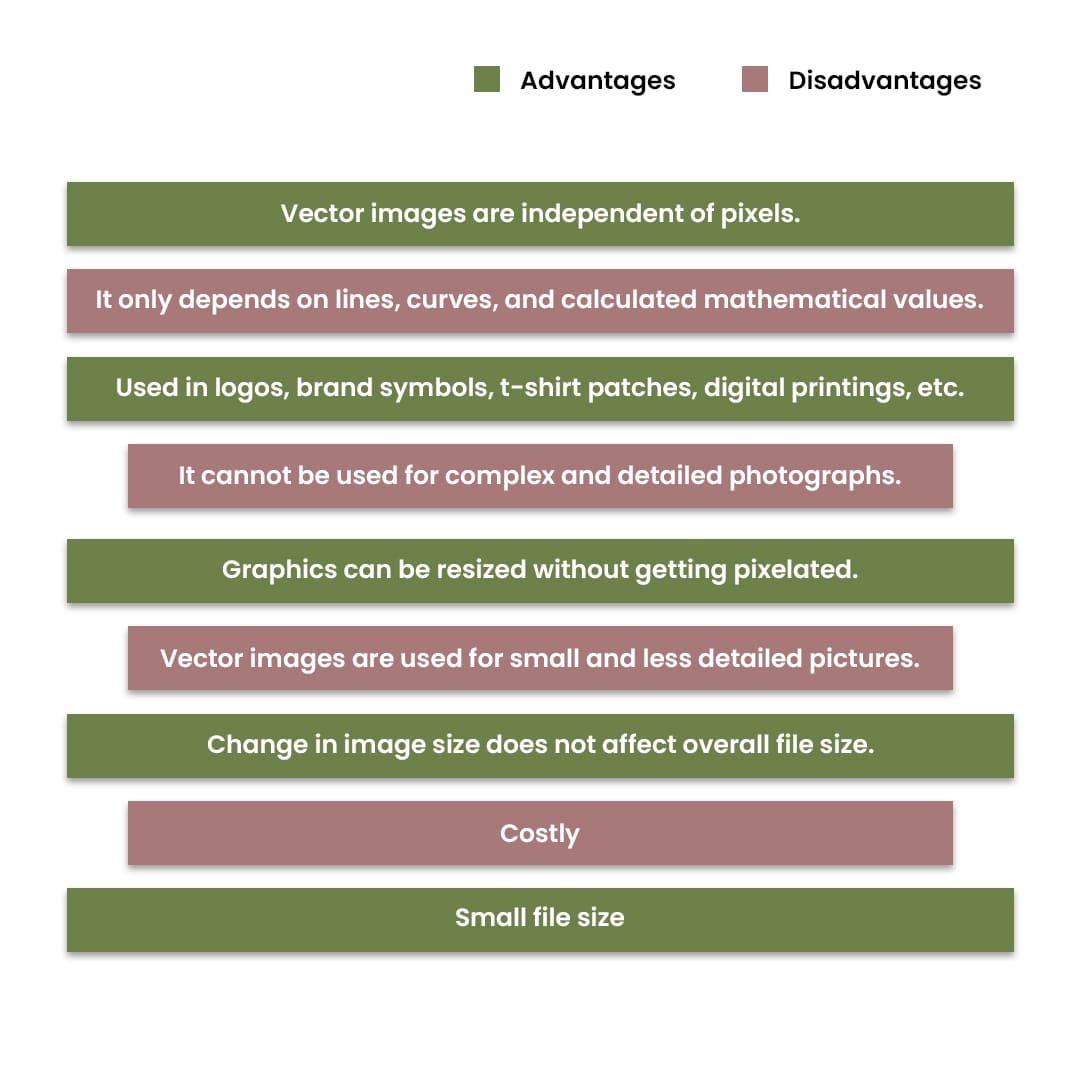
The images formed with precise mathematical calculations are vector images.
They are mainly made of shapes, lines, and anchor points that are referred to for forming a specific shape.
Generally speaking, vector images are formed by algorithms and geometrically calculated lines and are not affected by scaling.
Common vector file extensions are PDF, AI, SVG, CDR, EPS, etc.
| Advantages | Disadvantages |
| Vector images are independent of pixels. | It only depends on lines, curves, and calculated mathematical values. |
| Used in logos, brand symbols, t-shirt patches, digital printings, etc. | It cannot be used for complex and detailed photographs. |
| Graphics can be resized without getting pixelated. | _____________________________ |
| Change in image size does not affect overall file size. | Vector images are used for small and less detailed pictures. |
| Costly | |
| Small file size |
What are lossy and lossless compression files?
Files when decoded, converted, or compressed into different forms losses some data during the process that affects the overall quality are type of lossy compressed photos. On the other hand, the lossless compression retains the original file form even on reducing size and compression.
Important Image File Extensions and Formats
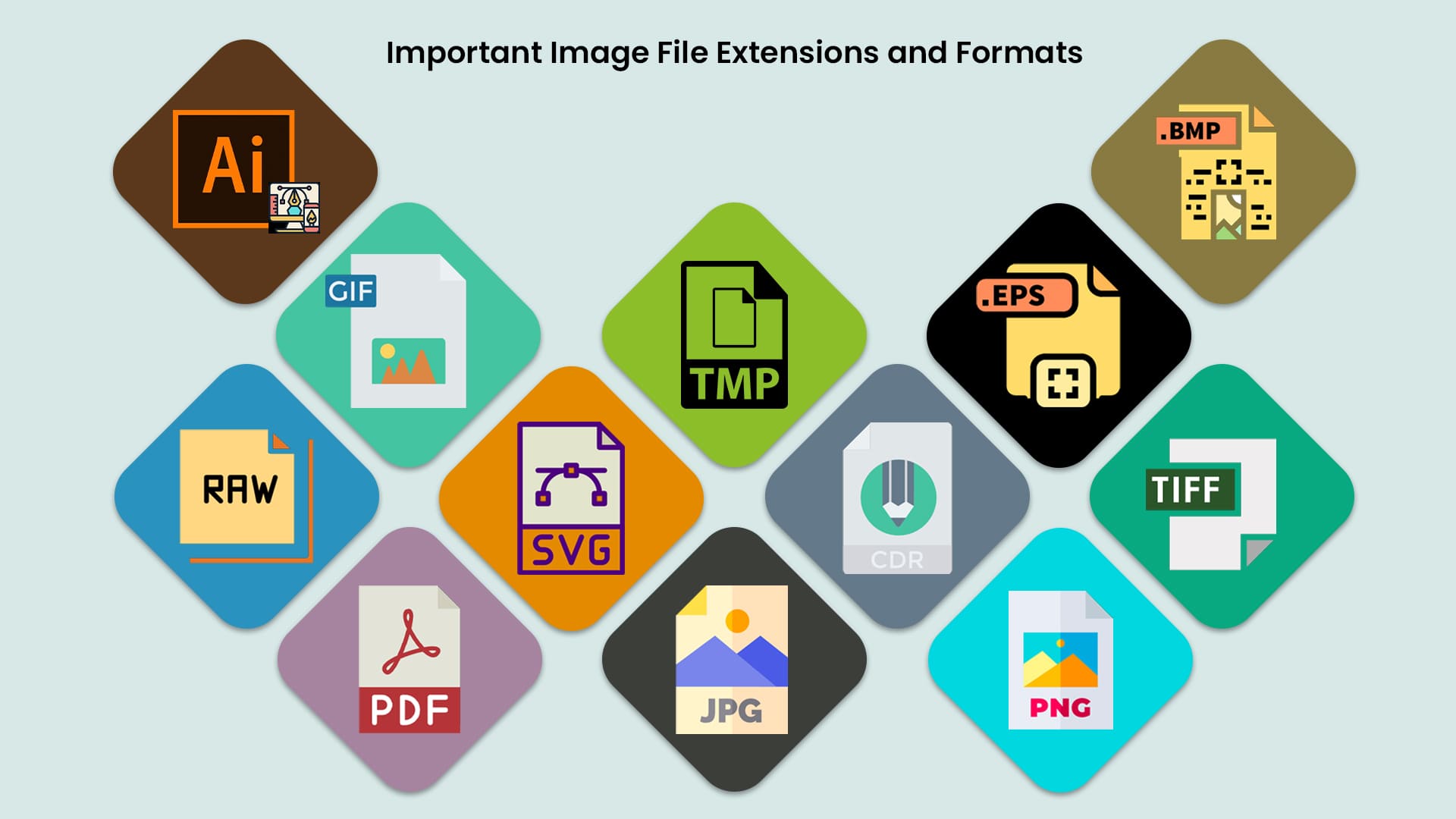
Let us know what variations do we have in web images:
JPG
Jpeg or JPG is the commonly used image file format and is popularly known for its lossy compression; users can resize the image as desired but at the cost of its quality.
Most web images, Microsoft Office documents, screenshots, computer images, etc., are often saved as an extension of JPG or JPEG. They are suitable for printing.
GIF
The acronym for GIF is Graphic Interchange Format and is widely used by social media lovers all over the place. They are used for presenting short and simple movable animations.
Though they could be better in quality and are small in size, they are superior for web pages where you need small images and animations.
BMP
Bitmap image files are shortly named BMP and are reasonably high quality and used to store digital photos with various colors and details.
They are best for storing two-dimensional, black & white, and colored images. Unlike jpeg, BMP files are uncompressed and can handle large files without any data error.
SVG
SVGs are Scalable Vector Graphics formats, preferably used in XML formats for creating small sizes and clear graphics, logos, animations, buttons, etc.
The best thing is that keywords added on SVGs are web and SEO-friendly and help achieve higher ranks on Google. Many web pages include SVG for styling and publishing advertisements in a crisp manner.
EPS
Encapsulated PostScript vector image file format used widely by graphic designers, illustrators, and photographers for producing high-resolution images.
They are easily resized without getting pixelated due to their lossless compression and are professionally chosen universally for printing vast posters.
RAW
RAW image format files are raster images generated when photographers capture the scene with a depth color range a good control over picture properties.
They are high-quality, lossless, and large-sized snaps that can hold small details precisely. Generally, they are unprocessed files manipulated by various software to convert them into images.
CDR
Vector images formed with Corel software are saved as CDR file image formats containing shapes, tables, lines, etc., having attractive features and elements.
CorelDraw often uses them to design envelopes, logos, banners, and web pages.
It is a lossy compression type of file and loses quality when converted to other image formats such as JPEG, PNG, GIF, PDF, SVG, etc.
PNG
A portable new graphic or PNG is a raster image file with the common purpose of a jpg. The only difference is that PNG is more prominent, has better quality, and can work seamlessly with transparent backgrounds.
TIFF
The tagged image file format is a raster image format with various features and can run on different machines and devices. When comparing tiff and jpeg, Tiff is larger in size with immensely better quality.
It supports lossy and lossless compression; due to its high functionality, they have slow uploading and refreshing time.
The most preferred document type to store files is the portable document format. The reason behind its vast usage is that the pictures stored as a pdf maintain quality even when it is compressed.
PDFs display the data correctly regardless of system and device type. Also, they are highly preferred for storing formal data, especially for academic reasons.
TMP
Tmp or temporary file, as the name suggests, store information temporarily and is self-created by a program when in action. At the same time, the data is automatically deleted when the file is closed.
The importance of such files is directly related to backup purposes and to direct the destination. Its famous example is cache files or any other data files which may not be visible to device users.
AI
Adobe Illustrator, or AI, is popular among graphic designers for storing vector-based image formats. Graphics and visual designs with interactive details created with adobe applications are saved as an extension of AI.
These point-based images are also used for icons, logos, small batches, and cute symbols.
The Conclusion
Learning about types of image formats leads to fruitful results for people dealing with the digital age of web content and information technology. It helps in deciding which file will support the browser, and operating systems and with how much quality.
Working with different graphic extensions and format variety is fun; the article will help you decide the most appropriate one for your next project.



